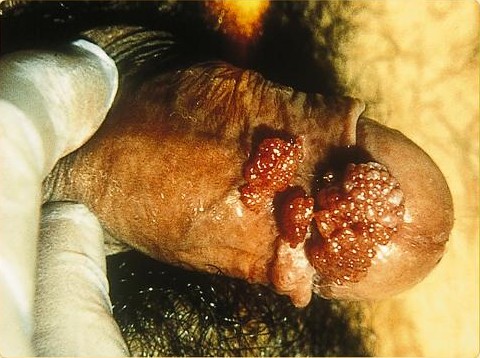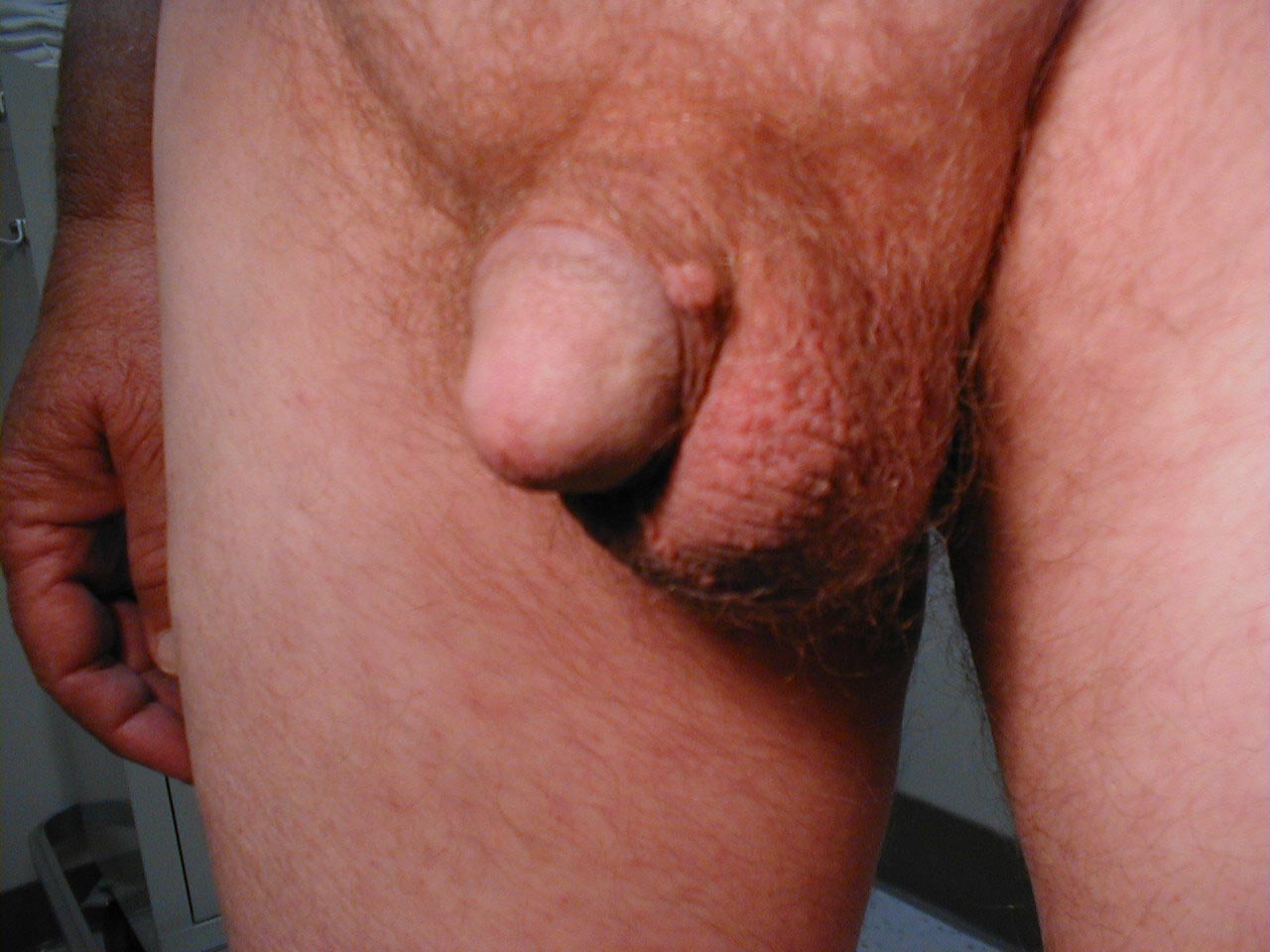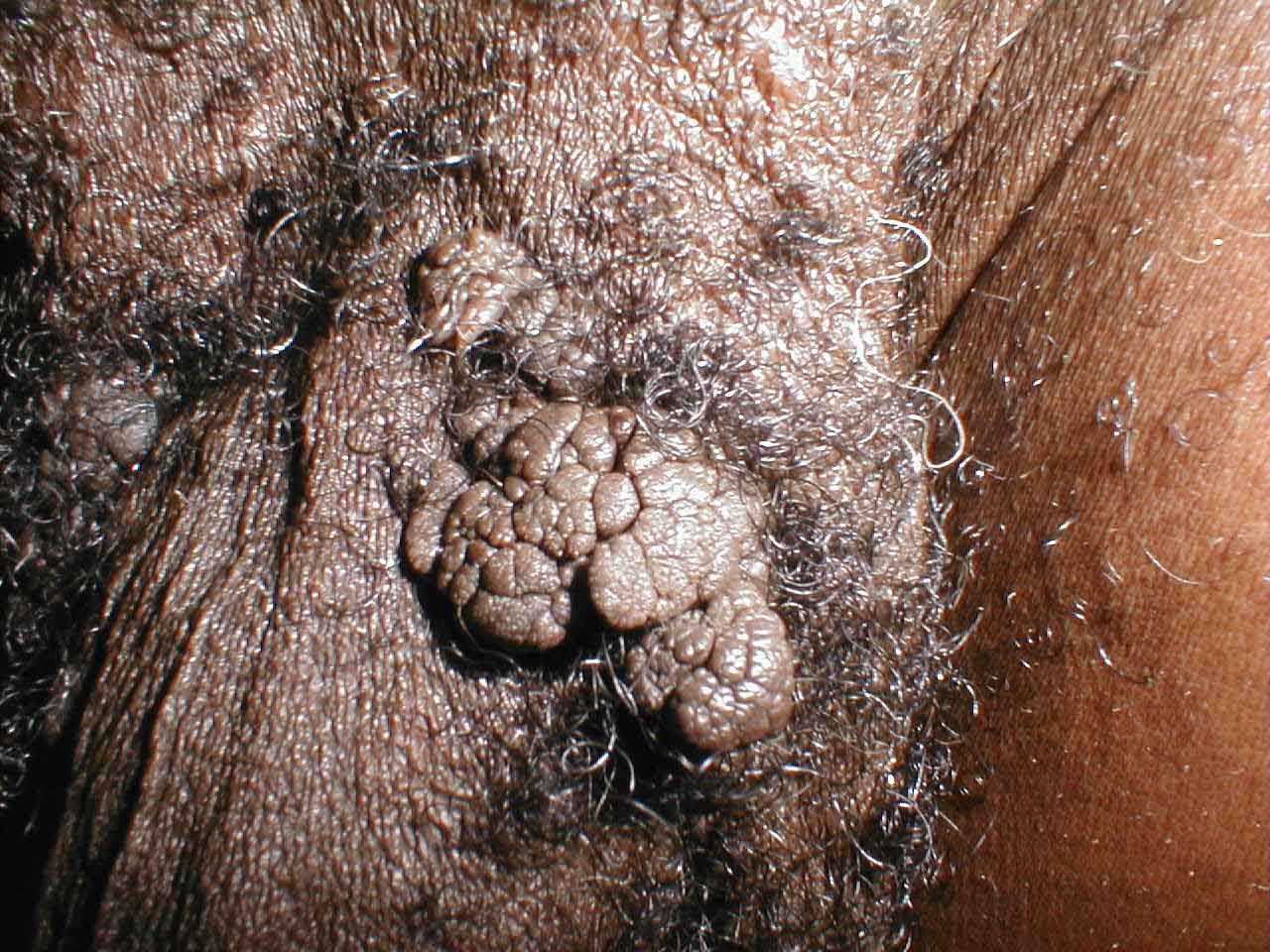Genital wart: Difference between revisions
Watchfulhose (talk | contribs) |
(No difference)
|
Revision as of 05:43, 15 July 2009
Template:DiseaseDisorder infobox
|
WikiDoc Resources for Genital wart |
|
Articles |
|---|
|
Most recent articles on Genital wart Most cited articles on Genital wart |
|
Media |
|
Powerpoint slides on Genital wart |
|
Evidence Based Medicine |
|
Clinical Trials |
|
Ongoing Trials on Genital wart at Clinical Trials.gov Clinical Trials on Genital wart at Google
|
|
Guidelines / Policies / Govt |
|
US National Guidelines Clearinghouse on Genital wart
|
|
Books |
|
News |
|
Commentary |
|
Definitions |
|
Patient Resources / Community |
|
Patient resources on Genital wart Discussion groups on Genital wart Patient Handouts on Genital wart Directions to Hospitals Treating Genital wart Risk calculators and risk factors for Genital wart
|
|
Healthcare Provider Resources |
|
Causes & Risk Factors for Genital wart |
|
Continuing Medical Education (CME) |
|
International |
|
|
|
Business |
|
Experimental / Informatics |
Editor-In-Chief: C. Michael Gibson, M.S., M.D. [1]
Please Take Over This Page and Apply to be Editor-In-Chief for this topic: There can be one or more than one Editor-In-Chief. You may also apply to be an Associate Editor-In-Chief of one of the subtopics below. Please mail us [2] to indicate your interest in serving either as an Editor-In-Chief of the entire topic or as an Associate Editor-In-Chief for a subtopic. Please be sure to attach your CV and or biographical sketch.
Overview
Genital warts (or Condyloma, Condylomata acuminata, or venereal warts or the pat carr jawn) is a highly contagious sexually transmitted infection caused by some sub-types of human papillomavirus (HPV). It is spread through direct skin-to-skin contact during oral, genital, or anal sex with an infected partner. Genital warts are the most easily recognized sign of genital HPV infection. They can be caused by strains 6, 11, 30, 42, 43, 44, 45, 51, 52 and 54 of genital HPV; types 6 and 11 are responsible for 90% of genital warts cases.[1] Most people who acquire those strains never develop warts or any other symptoms. HPV also causes many cases of cervical cancer; types 16 and 18 account for 70% of cases; however, the strains of HPV that cause genital warts are not linked to the strains that cause cancer.
Genital warts often occur in clusters and can be very tiny or can spread into large masses in the genital or penis area. In women they occur on the outside and inside of the vagina, on the opening (cervix) to the womb (uterus), or around the anus. They are approximately as prevalent in men, but the symptoms may be less obvious. When present, they usually are seen on the tip of the penis. They also may be found on the shaft of the penis, on the scrotum, or around the anus. Rarely, genital warts also can develop in the mouth or throat of a person who has had oral sex with an infected person.
The viral particles are able to penetrate the skin and mucosal surfaces through microscopic abrasions in the genital area, which occur during sexual activity. Once cells are invaded by HPV, a latency (quiet) period of months to years may occur. The latency period just means the HPV virus is in an incubation period. Having sex with a partner whose HPV infection is in the incubation period still leaves you vulnerable to becoming infected yourself. In other words, just because one can't see the genital warts, doesn't mean they are not there. HPV virus can last from 3 months to 2 years without a symptom. That causes the increase of HPV infectors and sometimes you cannot track down who was the source of the infection.
Symptoms
Genital warts often occur in clusters and can be very tiny or can spread into large masses in the genital or penis area. In women they occur on the outside and inside of the vagina, on the opening (cervix) to the womb (uterus), or around the anus. They are approximately as prevalent in men, but the symptoms may be less obvious. When present, they usually are seen on the tip of the penis. They also may be found on the shaft of the penis, on the scrotum, or around the anus. Rarely, genital warts also can develop in the mouth or throat of a person who has had oral sex with an infected person.
The viral particles are able to penetrate the skin and mucosal surfaces through microscopic abrasions in the genital area, which occur during sexual activity. Once cells are invaded by HPV, a latency (quiet) period of months to years may occur. HPV can last for several years without a symptom.[2] Having sex with a partner whose HPV infection is latent and demonstrates no outward symptoms still leaves one vulnerable to becoming infected.
-
Penile Condyloma Acuminata: Lesion is seen on shaft of penis, just proximal to glans.
-
Extensive Penile Condyloma Acuminata
-
Perianal Condyloma Acuminata: Extensive lesions surrounding anus.
Treatment
Genital warts may disappear without treatment, but sometimes eventually develop a fleshy, small raised growth. There is no way to predict whether they will grow or disappear.
Depending on the size and location of the wart, and other factors, a doctor will offer one of several ways to treat them.
- Imiquimod (Aldara) a topical immune response cream, applied to the affected area
- A 20% podophyllin anti-mitotic solution, applied to the affected area and later washed off
- A 0.5% podofilox solution, applied to the affected area but not to be washed off
- A 5% 5-fluorouracil (5-FU) cream
- Trichloroacetic acid (TCA)
- Pulsed dye laser
- Liquid nitrogen cryosurgery
- Electric or laser cauterization
- Condylox
- sinecatechins (Veregen) also Polyphenon E: ointment made of several green-tea-extracted catechines and other components. Mode of action is undetermined.[3] It is FDA-approved but very expensive
Podophyllin and podofilox should not be used during pregnancy, as they are absorbed by the skin and may cause birth defects in the fetus. 5-fluorouracil cream should not be used while trying to become pregnant or if there is a possibility of pregnancy.
Small warts can be removed by freezing (cryosurgery), burning (electrocautery), or laser treatment. Surgery is occasionally used to remove large warts that have not responded to other treatment.
Some doctors inject the antiviral drug interferon-alpha directly into the warts, to treat warts that have returned after removal by traditional means. The drug is expensive, and does not reduce the rate that the warts return.
Although treatments can remove the warts, they do not remove the HPV virus, so warts can recur after treatment. Traditional theories postulated that the virus remained in the body for a lifetime. However, new studies using sensitive DNA techniques have shown that through immunological response the virus can either be cleared or suppressed to levels below what PCR tests can measure. [2] According to the Center for Disease Control's report on HPV to Congress in 2004, studies have shown that 70% of new HPV infections clear within one year, and as many as 91% clear within two years. The median duration of new infections is typically eight months. The gradual development of an effective immune response is thought to be the likely mechanism for HPV DNA clearance. The state of the immune system determines the chances of removing the virus entirely and can be affected by factors such as HIV infection, certain medications, stress, or illness.[3] There is even some suggestion that effective treatment of the wart may aid the body's immune response.
Misdiagnosis cautions
It is a common misconception among men that hirsuties papillaris genitalis are genital warts. Hirsuties papillaris genitalis is not contagious and no treatment for it is necessary. Some may deem it unsightly and there are various methods of ridding the penis of the condition such as carbon dioxide laser treatment.
Genital warts (condylomata) should not be confused with Molluscum contagiosum (MC), which is often transmitted sexually, but does not occur internally as do condylomata. MC looks like small warts, which are much smaller than condylomata genital warts. It does not increase the risk of cervical cancer for women. Genital warts should not be confused with Fordyce's spots, which are considered benign.
Vaccines
Gardasil (sold by Merck & Co.) is a vaccine that protects against human papillomavirus types 16, 18, 6, and 11. Types 6 and 11 cause genital warts, while 16 and 18 cause cervical cancer. The vaccine is preventive, not therapeutic, and must be given before exposure to the virus type to be effective, ideally before the beginning of sexual activity. The vaccine is widely approved for use by young women, it is being tested for young men,[4][5] and has been approved for males in some areas, such as the UK.
References
- ↑ med/1037 at eMedicine
- ↑ "American Cancer Society: "Can Anal Cancer Be Prevented?"". Retrieved 2008-09-10.
- ↑ "Veragen package insert" (PDF). Retrieved 2008-08-18.
- ↑ Cortez, Michelle Fay and Pettypiece, Shannon. "Merck Cancer Shot Cuts Genital Warts, Lesions in Men". Bloomberg News. (Bloomberg.com) 13 Nov 2008.
- ↑ HPV Vaccine Gardasil May Help Boys, Men by WebMD Health News, Nov 13, 2008
Additional Resources
- Noah Scheinfeld Daniel S Lehman An evidence-based review of medical and surgical treatments of genital warts. Dermatology Online Journal (2006) 12 (3): 5. http://dermatology.cdlib.org/123/reviews/warts/scheinfeld.html
External links
- Genital Warts Support, Information, Pictures & Videos
- University of California, Santa Barbara's SexInfo has articles on both Anal Warts and Genital Warts
- Genital warts at the Open Directory Project
- Information on Genital Warts and HPV
- HPV information from the US CDC
- Information on Genital Warts
- Index page of genital wart images (Note - hosted on advertising site)
- CDC Report to Congress
Template:STD/STI Template:Viral diseases Template:SIB
da:Kønsvorter de:Condylomata acuminata dv:ޖެނިޓަލް ވޯރޓްސް it:Condiloma la:Condylomata acuminata lt:Smailiagalė kandiloma ms:Ketuat kelamin nl:Genitale wrat fi:Kondylooma sv:Kondylom ta:பாலுறுப்பு உண்ணிகள்

![Genital warts on a female]]](/images/f/f7/SOA-Condylomata-acuminata-female.jpg)



